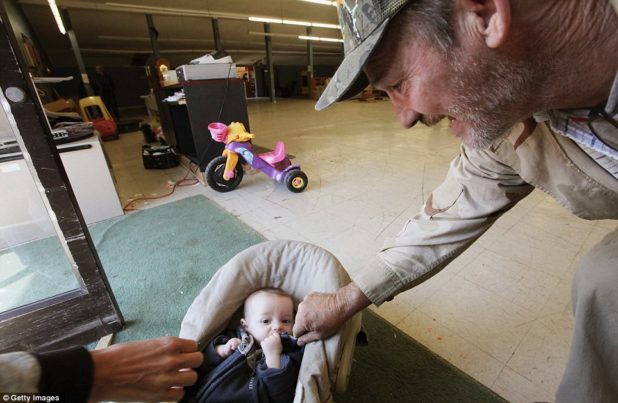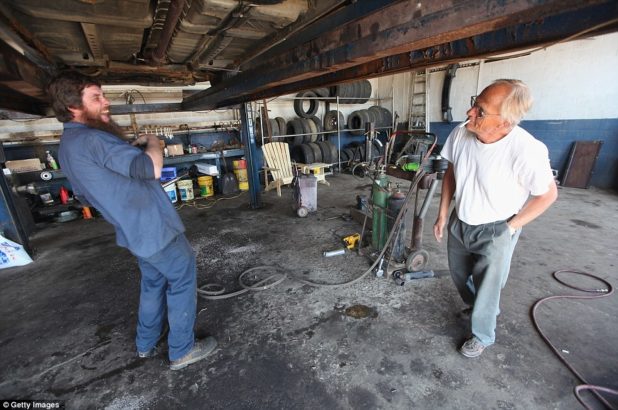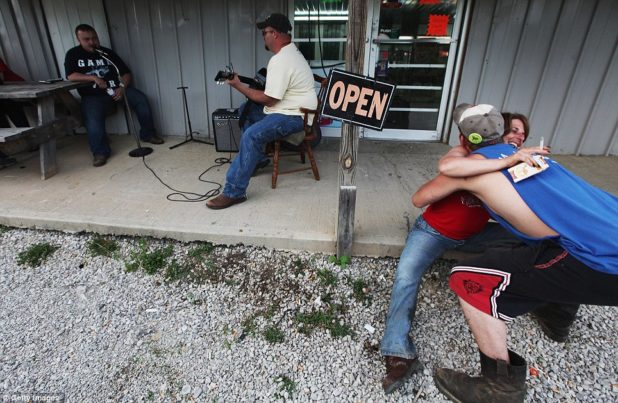Andrew Anglin
Daily Stormer
April 11, 2019
No matter which way you try to slice it, Americans are getting poorer at an astonishing rate.
We remain the richest country in the world, so the only explanation for this is that the wealth is being transferred to someone. And we know who it is being transferred to: super-rich multinational corporations and hordes of nonwhite immigrants.
A primary complaint about the current U.S. economy has been the hollowing out of “middle-skill jobs” — the type of work that people with high school educations and substantial training could do and earn a “middle wage.”
Be smart: But even if such jobs were restored, it would not mean a revival of America’s battered middle class. That’s because middle-wage jobs largely do not pay a middle-class salary.
Confused? So were we.
What’s happening: Since the early 1970s, the American middle class has shrunk to about half of all families, from about 60%, according to Pew, a trend that’s taken on more importance since the financial crash, becoming a substantial feature of the nation’s broad disaffection.
Digging into the economic fallout, study after study has noted the deindustrialization of numerous states, such as Ohio, Pennsylvania, Michigan and Wisconsin, resulting in tens of thousands of job losses.
But while many of those jobs once paid middle-class wages, the collapse of unions and other factors have much-reduced the pay. Now, the same jobs are said to pay “middle wages,” but do not suggest a ladder to the actual middle class.
An example: In 1972, the average American union carpenter earned the current equivalent of $33.55 an hour — about $70,000 a year. Today, a carpenter earns $20.23 on average, about $42,000 annually, according to Indeed.
The difference in dollar terms is of course enormous. But it’s arguably more in terms of what it buys. In the 1970s, it was a ticket to the middle class, with the then-accouterments, including a home, a reasonably new car, and possibly even a summer vacation.
Today’s average carpenter salary is at the very bottom of the middle class, which begins at about $40,000, according to Pew, and does not typically put a worker in a position to purchase the 1970s middle-class lifestyle.
The background: In 1948, unionized auto industry workers achieved a major breakthrough — an agreement from the industry on a “basic wage.” Over the subsequent decades, the symbol of the basic wage was $20 an hour, a threshold that spread, representing the bottom of the union wage ladder.
By 1979, 23% of all U.S. hourly workers earned at least $20. Then it began dropping, to 18% in 1989 and 16% in 2000.
Today, economists and other experts typically call $15 an hour “middle wage;” the top of the middle-wage scale can be a little over $20. Since the financial crash a decade ago, some three-quarters of new jobs have paid around $15 or less an hour. As of 2015, 42% of all workers earned $15 or less per hour, according to the National Employment Law Project.
This is rarely reported on in any normie publication. Axios itself is wonkish and elite, even though it appears to be written for first graders.
The only person who actually covers this is Tucker Carlson.
So for most people, when they hear Trump say that the economy is doing so well that he has no choice but to flood America with third worlders, they think “oh it must just be me and my family and friends that are doing poorly – the rest of the country must be doing great!”
In actual fact, everyone is suffering, and the obvious solution is not only to do what Trump is sort of doing and regulate trade as a way to keep jobs in the country and bully corporations into bringing factories home, but to do what Trump said he was going to do and stop immigration.
The concept of bringing factories home and then bringing in foreign workers to staff the factories is utterly nonsensical if you are looking at it from the standpoint of the average American worker. It only makes sense if you’re singularly obsessed with the GDP as the only measure that means anything.
But as many people have pointed out lately, the GDP does not measure the quality of life of the average American, and in fact has virtually no relationship to it at all in a situation of globalism.
What we need in this country is for wages to rise. In order for wages to rise, you have to make labor more valuable, and to make labor more valuable, it has to be more scarce, meaning you have to have fewer people in the workforce. This is absolutely basic supply and demand, which is the first and simplest principle of economics.
And yet, these people all have the nerve to go on TV and say “immigration is good for the economy” – because it raises the GDP – and imply that this should mean something to the average American who is not a corporate executive.
It is simply a lie and a hoax. There is no reality in which more people in the workforce means higher wages for workers.
Trump and the rest of the GOP want to stress a dichotomy between “legal and illegal” immigrants, but this distinction is almost completely irrelevant. More people is more people, meaning the supply is higher, meaning the demand is lower, meaning the value of labor drops.
Also almost irrelevant is the distinction between “skilled” and “unskilled” workers. In fact, “skilled” workers coming in from India and China are going to drive down wages quicker. With “unskilled” workers, higher-level jobs cost less because the native population is driven into those fields by seeking higher wages, whereas if you bring in people with degrees, they just directly drive down the wages in credentialed fields.
Trump recently made his biggest policy reversal ever when he switched from “we need people for factories” to “America is full.”
But the truth is, America is way beyond full, as is evidenced by the above wage statistics. We are in fact “flooded.”
Any Way You Slice It
I prefer to make the argument that America doesn’t need immigrants because we are a nation, we are a people, we have a right to our own place where we live – a home, just like everyone else in the world has.
But apparently, no one wants to make that argument. People want to talk about crime and economics, instead of ethnic identity and ethnic rights.
But it really doesn’t matter. You can make the argument from any direction, and come to the same conclusion: immigration into developed, first world countries is always bad, no matter what.
I have argued that the response to all of this nonsense about legal vs. illegal and skilled vs. unskilled should be “we don’t want any immigrants, at all, period, end of story.”
And I think that this meme can and will catch on. It cuts through all of the bullshit, and simply addresses the core issue: we have enough people to have a great country. We are not a “nation of immigrants,” the poem on the Statue of Liberty is not our guiding philosophy, this all has to end.
We are a people.
And we have a right to exist.
 Daily Stormer The Most Censored Publication in History
Daily Stormer The Most Censored Publication in History



































